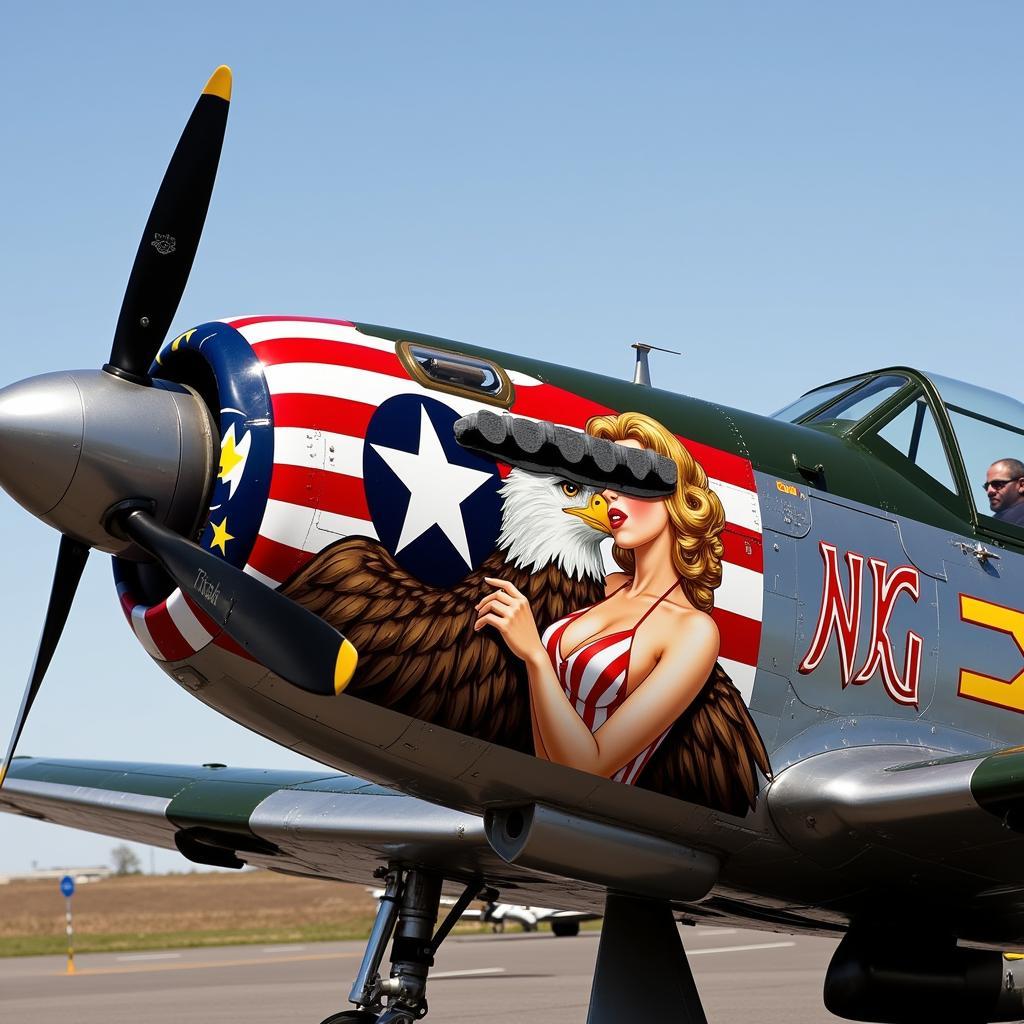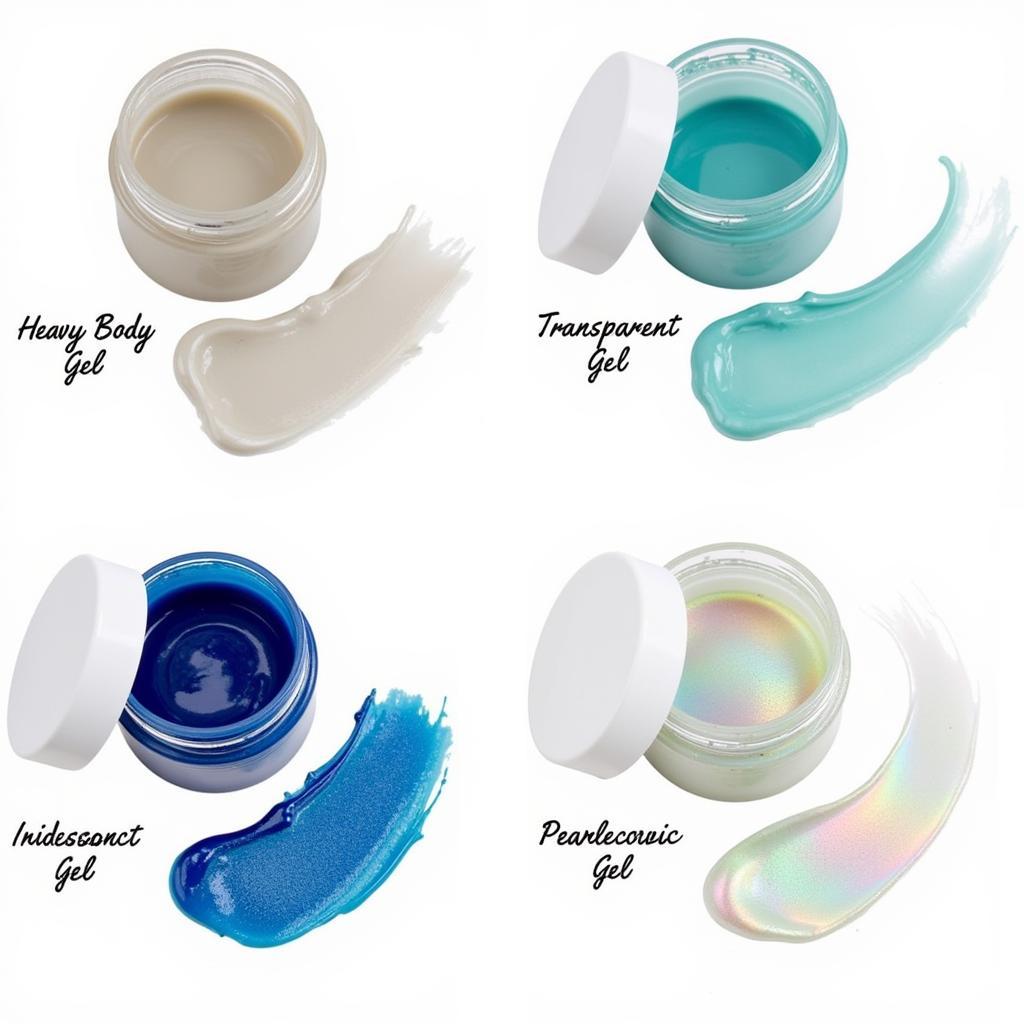WWII Pinup Nose Art: A Fusion of Art, War, and Female Imagery
WWII pinup nose art represents a fascinating intersection of art, wartime culture, and the idealized female form. These vibrant and often provocative paintings adorned the noses of bombers and fighter planes, offering a touch of whimsy and a connection to home for airmen facing the grim realities of war. From Vargas girls to patriotic symbols, these images became an integral part of WWII iconography.
The Origins and Significance of WWII Pinup Nose Art
Why did airmen paint pinups on their planes? The practice wasn’t officially sanctioned, and its origins remain somewhat shrouded in mystery. Some believe it stemmed from a desire to personalize the aircraft, to make it feel less like a machine of war and more like an extension of the pilot’s identity. Others point to superstitious beliefs, seeing the images as good luck charms against enemy fire. What’s undeniable is the powerful psychological impact of these paintings. They provided a sense of comfort, a reminder of the world the airmen were fighting to protect, and a potent symbol of hope amidst the chaos of war.
The themes of WWII pinup nose art were as diverse as the airmen who painted them. Many featured popular pinup models of the era, such as Betty Grable and Rita Hayworth, their images copied from magazines and calendars. Others depicted patriotic figures like Lady Liberty or fictional characters. Some even featured personalized images of wives, girlfriends, or family members. Regardless of the subject matter, the artwork served as a vital morale booster.
Exploring the Artistic Styles and Techniques
The artistic styles varied widely, from simple outlines and caricatures to highly detailed and realistic portraits. Many artists were self-taught, utilizing whatever materials they could find, including leftover paints, brushes, and even discarded pieces of metal. The limited resources often led to innovative techniques and a raw, unpolished aesthetic that added to the charm of the artwork. Some nose art even incorporated elements of caricature and humor, poking fun at the enemy or depicting comical situations. This added a layer of levity to the otherwise serious business of war.
The conditions in which the art was created were far from ideal. Airfields were often dusty, noisy, and exposed to the elements, making it challenging to produce intricate artwork. Despite these challenges, the airmen persisted, driven by their artistic passion and the desire to beautify their war machines. This dedication speaks volumes about the importance of art and self-expression, even in the most trying circumstances.
 WWII Fighter Plane Nose Art with Patriotic Symbols
WWII Fighter Plane Nose Art with Patriotic Symbols
The Legacy of WWII Pinup Nose Art
Today, WWII pinup nose art is recognized as a unique and significant form of folk art. It offers a glimpse into the lives and minds of the men who fought in the war, revealing their hopes, fears, and desires. These paintings serve as a powerful reminder of the human element amidst the devastation of war, demonstrating the enduring power of art to provide solace and inspiration. Museums and private collections around the world preserve these pieces, ensuring that this vibrant chapter of history is not forgotten.
The influence of WWII pinup nose art can still be seen today, in everything from fashion and advertising to contemporary art and graphic design. Its iconic imagery continues to capture the imagination, sparking conversations about art, history, and the complex role of women in wartime. This enduring legacy testifies to the cultural impact of these seemingly simple paintings.
Conclusion
WWII pinup nose art stands as a testament to the human spirit’s resilience and creativity even in the face of adversity. These images, born from a desire for personal expression and a longing for home, offer a unique window into the lives of WWII airmen. From their artistic styles to their cultural significance, they continue to fascinate and inspire, reminding us of the enduring power of art to uplift, connect, and provide a sense of hope amidst the darkest of times. Remember these brave artists and their legacy when you encounter WWII pinup nose art.
FAQ
-
What is the purpose of WWII pinup nose art? It served as a morale booster, a form of personal expression, and sometimes even a good luck charm for airmen.
-
Were the pinups always women? While the vast majority depicted women, some featured patriotic symbols, cartoon characters, or even personalized images of loved ones.
-
Who painted the nose art? The artwork was typically created by the airmen themselves, often using whatever materials they could find.
-
Where can I see WWII nose art today? Many museums and private collections around the world preserve and display these historic pieces.
-
Is WWII pinup nose art considered offensive? While some may find the imagery objectifying, it’s important to consider the historical context and its significance to the airmen who created it. It’s a complex topic that continues to spark debate.
-
What techniques were used to create the nose art? A variety of techniques were employed, from simple outlines to detailed paintings, often using leftover paints and materials.
-
How did the harsh conditions affect the creation of the art? The challenging conditions at airfields often resulted in a raw, unpolished aesthetic that adds to the charm of the artwork.
For support, contact us at Phone Number: 02462573573, Email: [email protected] Or visit us at Savico Megamall, 7-9 Đ. Nguyễn Văn Linh, Gia Thụy, Long Biên, Hà Nội 10000, Việt Nam. We have a 24/7 customer service team.

